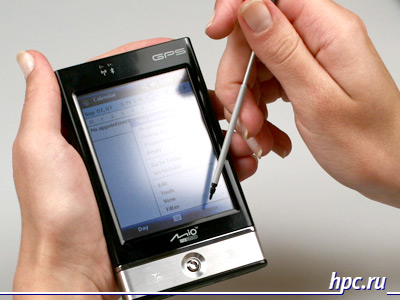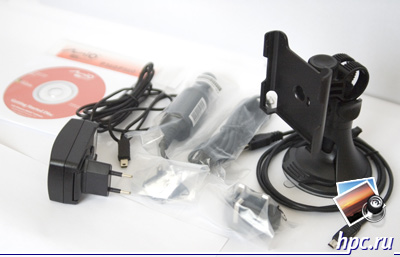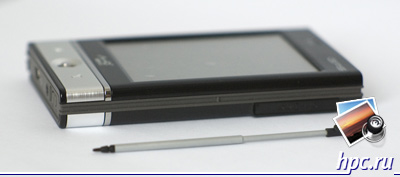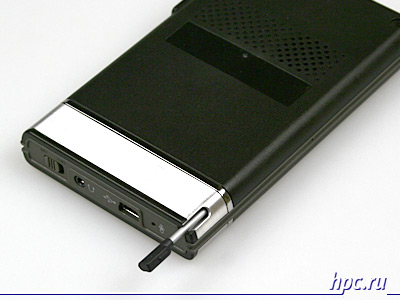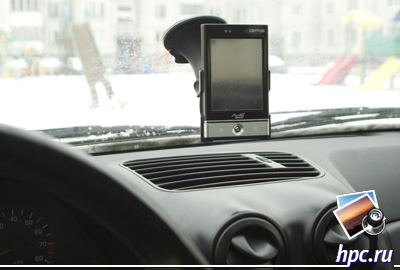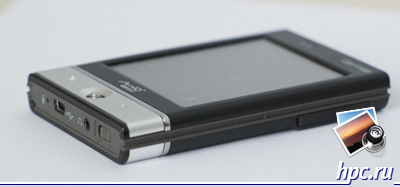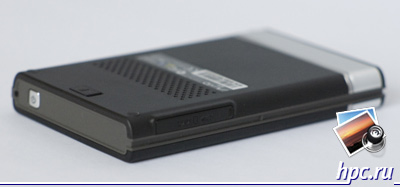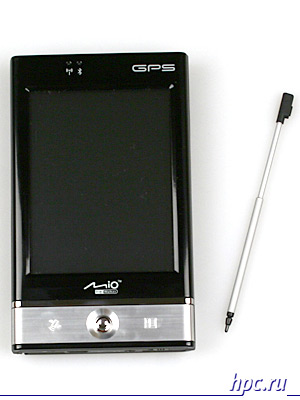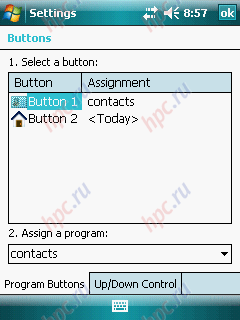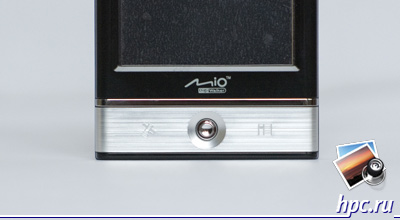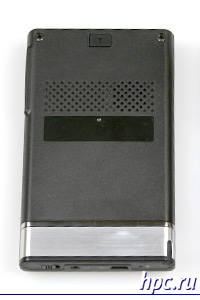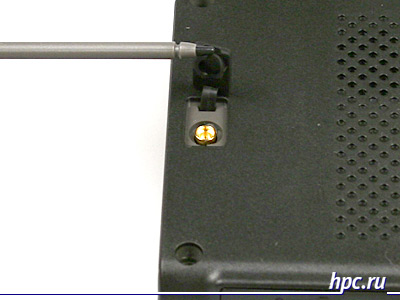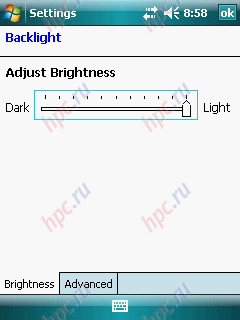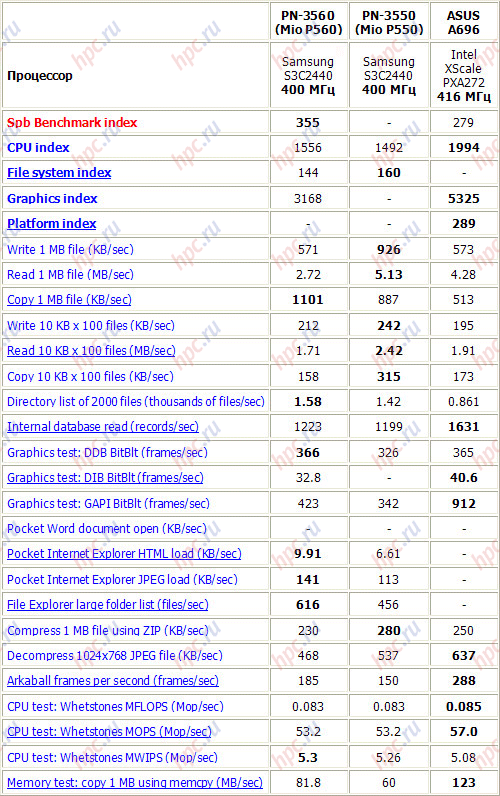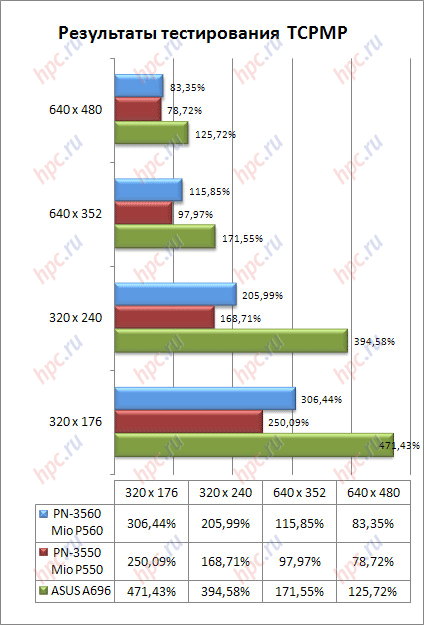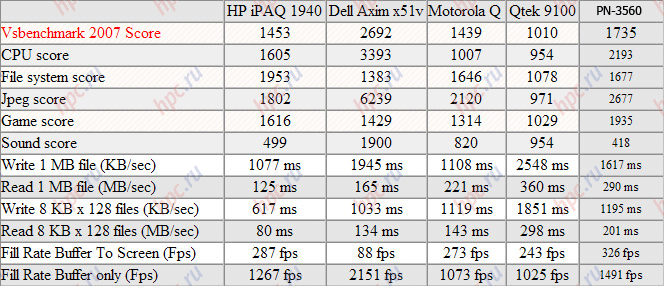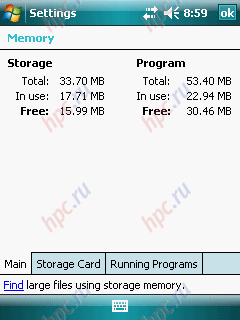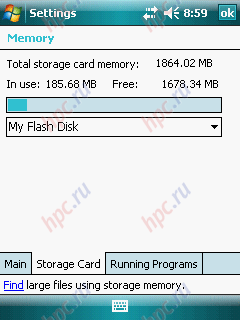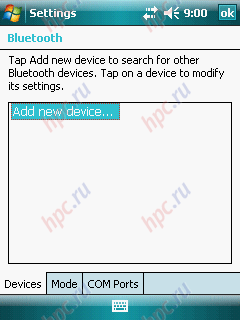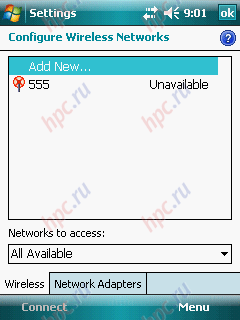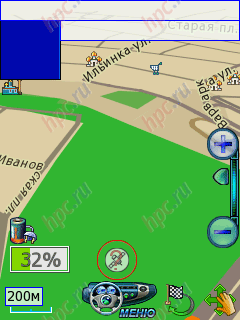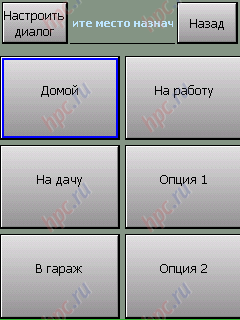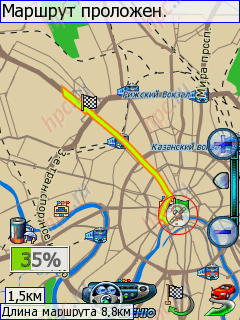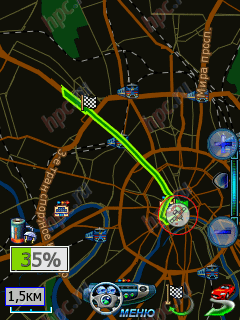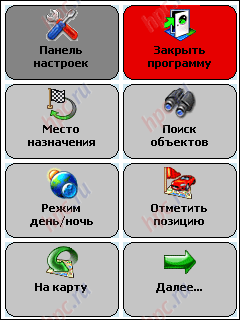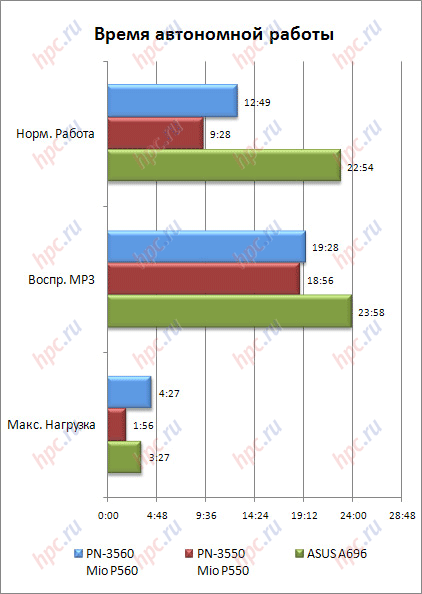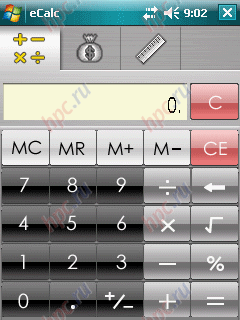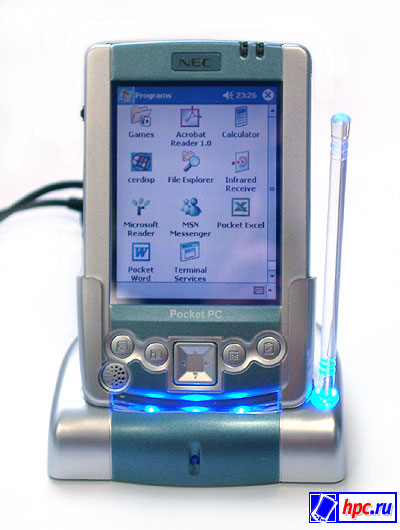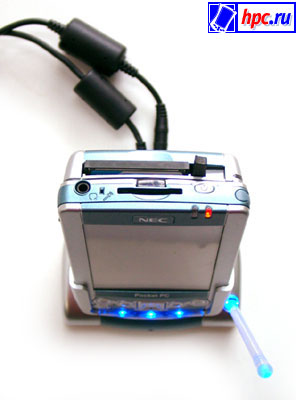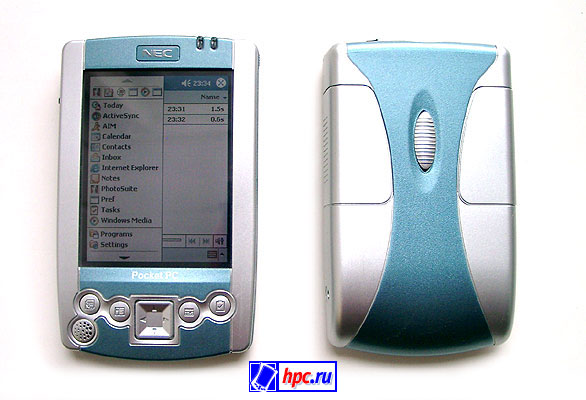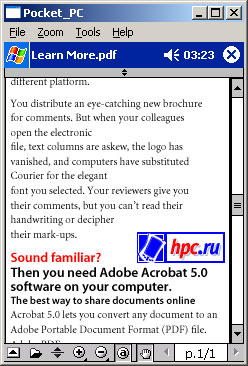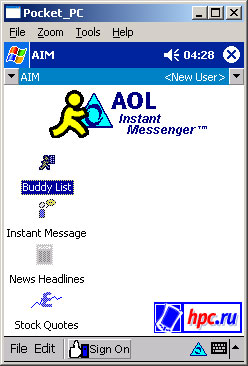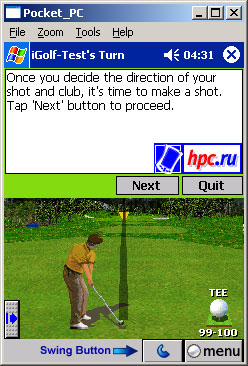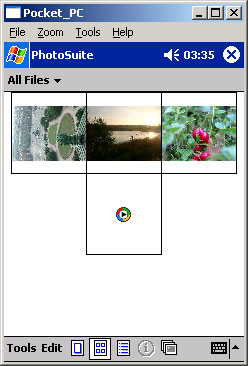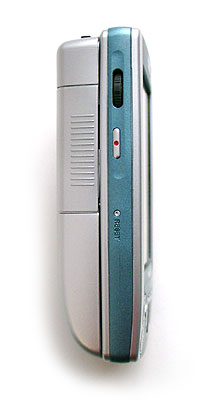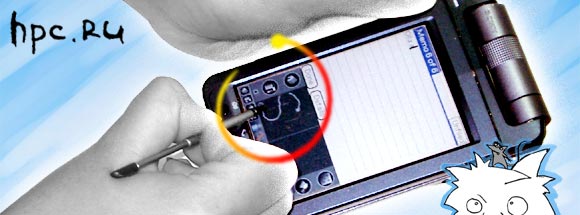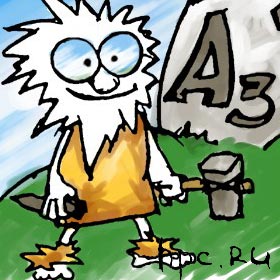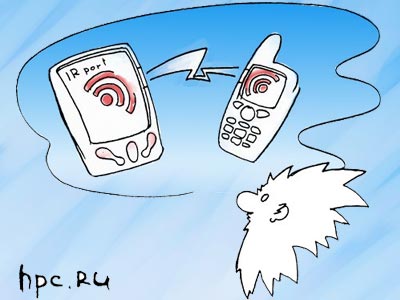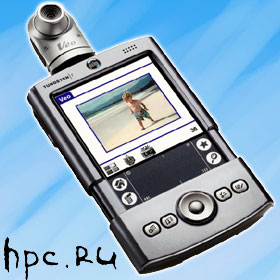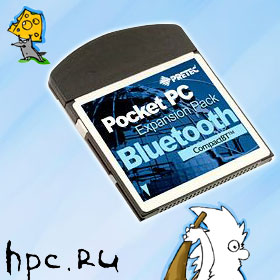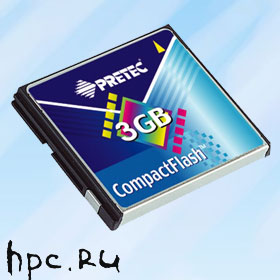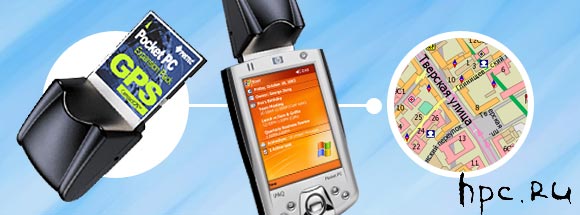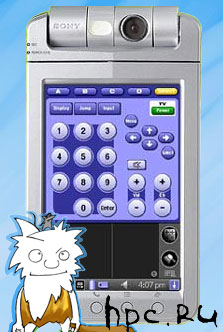To help all those who are not familiar with the interesting world of handheld computers. Today, when even an octogenarian grandmother defile on the Moscow public garden with mobile phones is very disappointing that many are unaware of such wonderful things as a pocket PC or PDA. And very often have to answer to the question: "What's that in your hands?" Meanwhile, the mobile computers is almost as revolutionary easy to use, as well as mobile phones - they deserve the attention, interest, and money too. Let's see what the Pocket PC and why you need it.
CPC consists of the same parts, and his older brother desktop: it has a processor, memory, sound and video, display, expansion slots, through which he can add memory or capabilities (more on this below), sometimes keyboard.
 |
| Handhelds: Palm OS, Pocket PC and Linux |
However, all these components are very compact and tightly integrated, allowing the unit weighs 100-200 g and placed in a breast shirt pocket or purse. Not without reason, these machines are called PDAs. Even the books of so-called "pocket" format often have a large size!
Memory PDAs
Still, the CCP is very different from a desktop or laptop computer. First of all, it has a relatively small screen, there is usually no external keyboard and mouse, so the interaction of humans and the handheld is organized differently. More on this later. Another important difference - usually in this machine there is nothing like a hard drive, so the volume of stored information are relatively small. However, and size of the programs is much smaller than on desktop machines. The main repository is built-in memory (up from 2 to 64 MB), and the role of external "floppy" performing flash memory cards. Because of this difference, the CCP is most often used in conjunction with a desktop PC, handheld computer used to take a "field" are most needed.
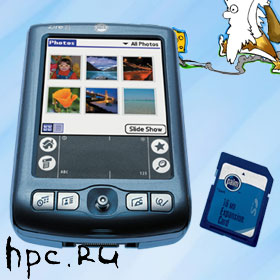 |
| Cladkaya couple: Palm Zire 71 and the memory card |
So, handheld computers and the size of many files is also quite "pocket". For example, installing office suite on a laptop (Windows, Office, etc.) will require 300 MB to 2 GB of free hard disk space. In memory of a handheld computer on the same application functionality will occupy 1.10 MB. A beautiful color average game - from 0.5-2 Mb. The variance of the data files (documents, etc.) are less impressive, but the savings is still there. And only the most densely compressed files (eg music MP3) take on the PDA and the same amount of large machines. In addition, almost all modern PDAs can work with external flash memory cards. The prices of these cards recently plummeted, so the problem of lack of memory can be easily solved buy an additional module. To the memory card is very convenient to keep some not too frequently used programs, MP3-music, electronic books.
PDA or laptop?
Quite often you can hear a PDA compared to a laptop. Regardless of the outcome of the comparison, it is absolutely the wrong approach. Laptop and PDA are designed for completely different tasks based on different principles, and only complement each other, but not replace.
 |
With a laptop work the same way as with a desktop computer: include, up to a minute wait loading Windows, perform some kind of long (half an hour or more) work, for example, document editing or viewing video, then just as slowly turn off the car and hide in bag. With the PDA - all differently. Him out of his pocket, turned on and off a hundred times a day. It's happening now! The handheld is similar to the lights: silk - and it is enabled. Click! And he shut down. In this case, turn it off at any time, without worrying about saving documents and shutdown Windows ». After another include everything on the screen would be absolutely in the same state as before shutdown. Due to such a "lightning", a PDA and have long deserved love as an ideal notebook and diary. Information is always in your pocket, have access to it can be a few seconds. There is also a convenient file and search. Owner of the laptop, this speed of data access and never dreamed of - the laptop is first necessary to obtain, then a couple of minutes to include ... However, if the address book to wait for downloads is still possible. But if you have forgotten the right word in conversation with a foreigner, only dictionary that includes lightning fast searches and translation, save your honor and will not interrupt the conversation. Translation search in the laptop is totally unacceptable solution - waiting for the right words a few minutes no one will. The second fundamental difference between a laptop and PDA connected to the input of information. Although the PDA with built-in keyboard, there are, not so much as standing in a bus, for example, the keyboard is not particularly razverneshsya. With his arm still more complicated. It was therefore devised an excellent replacement of this sweet couple, and it is ... the screen! It is sensitive to depression, according to him can drive a special stick called a stylus (more correctly "style", but so in Russian resist).
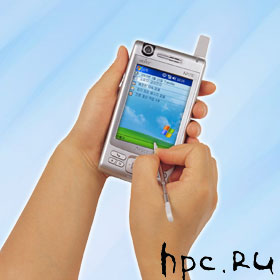 |
This interface is extremely intuitive. Do you want to click on the screen - tap the stylus! For typing on a PDA, the so-called "virtual keyboard" - its keys are displayed directly on the screen, and text can be typed easily by touching them with stylus. There are various options for handwriting. Want to write a word - write it by hand directly on the screen or in a special area of the input (called a way of introducing information graffiti)! Some systems will recognize the natural input, some need a little help by sharing a letter or drawing them in a simplified face. But I still write by hand, we are accustomed to from childhood.
Recently, some manufacturers try to equip the handhelds built-in keyboard, like the one that you see in the picture. Typically, the text on it to gain weight, two thumbs - as a rule, these solutions well thought out from an ergonomic standpoint. However, the taste and the color of friends there ...
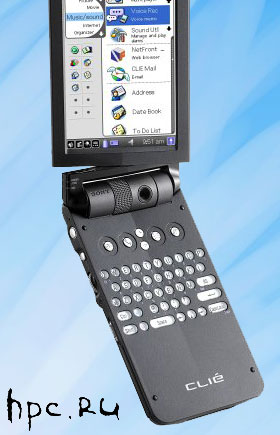 |
Modern PDAs so powerful that they can be compared whenever possible with conventional computers, the late nineties. 400 MHz processor, 64 MB of memory, memory card (floppy) from 32 MB to 6 GB! Sounds solid! Therefore, the main limitation of opportunities PDA is still a small screen.The resolution today is usually 320x320 or 240x320 pixels, so, for example, documents and Web pages are laid out for a large computer to somehow specially processed, otherwise their already very uncomfortable viewing. Three-dimensional movies and games, of course, also lose a hefty portion of entertainment. And it looks funny designer or architect, doing his most complex work on this tiny screen is. (However, there is a pocket version of AutoCAD'a!:) So everyone - his own. Many tasks are best performed on a laptop or desktop PC, it will be much more convenient. Yet the CCP has many other applications for which these machines phenomenally useful and sometimes indispensable.
Why need a PDA?
Diary
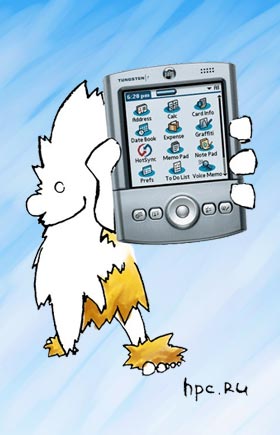 |
People leading their records, business and address book only in MS Outlook, rather take the risk. If you turn off the lights or have to go for all of their records and references are not available. It is here stnet extremely useful handheld computer. He always has a diary, allowing time to time cases, allowing them to transfer and edit, notifying about upcoming events and tasks snooze. Address Book has a lot of fields, divided into categories and allows you to effectively search for information - not just by name but by a fragment of a phone number, for example. To-do list keeps tasks that do not have a specific date for performance, well, it notes provide numerous notebooks. Some are designed for plain text, others can make drawings directly on the screen, and some even work with voice notes! But the interesting thing - the information is fully synchronized with your desktop computer, so when he is at hand, their data can be viewed and edited using the keyboard and large screen, which effectively when writing to memory large amounts of information.
Electronic Book
While futurists predict a coming boom in "e-books, hundreds of thousands of owners of PDA has quietly enjoy reading those same books. Any text available on the desktop, be it a book, article, website can be copied into memory PDA and read at any convenient time. Bookmarks, a quick search and rich settings "appearance" of books - all these provide the most comfortable environment for reading. Moreover, in a tiny PDA with no problems you can fill an entire trilogy of Tolkien (1.2 MB in finished form), or the complete works of Lenin (a little more) without burdening ourselves heaviest volumes. Modern screens are very well looked in the dark, and the sun. High resolution, excellent contrast and brightness, custom fonts of all types and sizes make reading a pleasure.
Dictionaries
That's where the CCP has no equal! If the conversation is forgotten a word, no other technical solution (be it a laptop or paper dictionary), can not find a forgotten translation for a few seconds. Contemporary vocabulary of the system allow you to be a real polyglot - there are lexical database for the most popular languages, including highly focused on themes. For example, such a monster as Lingvo, there is also a version for Pocket PC.
Editing documents and spreadsheets
Of course, for handheld computers very quickly created a variety of office programs. They are able to easily share documents with their desktop counterparts - to copy the PDA working document from Word or Excel, you can just a few seconds in three or four clicks. On a small computer you can edit it or just browse while maintaining text formatting, tables, etc. Of course, the functional "pocket" analogues Word or Excel is not as rich as the desktop versions, but quite sufficient. In spreadsheets work fine, many formulas and even built a chart.
Music and Video
All current models of PDAs do an excellent job with your music and video. They lose a few specialized MP3-audio players for the duration of battery life, but listen to in your free time favorite songs for an hour or two is quite possible. The sound quality is decent. As to the videos, everything rests on the small screen. If you just want to get acquainted with movies, video clips or watch TV news in internet broadcasting, handheld is fine. But for the present pleasure, of course, need a screen, like in the cinema IMAX. Although beloved Masyanya hire and PDA display, because it looks and plays the fool she is no worse than on TV:)
By the way, about the Internet
Browser, mail client, and "ICQ" you are guaranteed. Due to the small screen and lack of waste technologies, not all sites will appear in full, but most of them are accessible and readable. Therefore, to view latest electronic newspaper can be, for example, on the way to work, on-line. Of course, this requires access to the Internet. To connect to the Internet there are lots of options - ranging from communication through the desktop and ending now firmly entered into the life tehnoologiyami type of GPRS. You can connect via a traditional modem, there is a special compact mobile solutions. However, the most widespread and convenient in the case of PDA connection through the mobile phone. A bunch of PDA mobile phone has a very high degree of mobility. Work with a cell phone can be an infrared port, or that much more convenient for radisvyazi Bluetooth.
 |
Many current models of handheld machines support wireless protocol Bluetooth ("Blue tooth"). If you attend to your purchase, who can work with GPRS and equipped with "blue tooth, then you get one of the highest quality and most comfortable way mobile access to network of. Thanks to the standard Bluetooth, both devices - mobile and handheld - can easily be paired, at a distance of ten meters. In this case, not necessarily that the devices were in the line of sight as it goes when you use the infrared port. Another common technique to connect to the LAN is WiFi. This fast and cheap wireless protocol is most common in the U.S.. If your firm has already gained access to the benefits of modern civilization in the form of Wi-Fi, then, in the office, you can easily connect to an internal wireless network and the Internet. It's cheap and quick.
Digital camera, Bluetooth-module, GPS-receiver + PDA
Already bought the CCP, many realize that they do not have a digital camera, or GPRS-module or Bluetooth. More often, however, trite requires more memory. Fortunately, all these issues are easily solved. In such cases, simply buy everything you need to complete happiness. A wide variety of peripherals sold in the form of special cards. In the picture below you see a PDA equipped with a photo module. Click! - And PDAs into a camera ...
Solve the problem of availability Bluetooth'a a machine to access the Internet via cell phone can be the same. Enough to buy just such a map - and your PDA will be "blue tooth":
Specially for these cards almost every modern handheld cnabzhen 1.2 connectors or expansion slots (connectors, these are usually at the top or side edge Pocket PC). They are adapted not only to the periphery, but, as already mentioned, for memory expansion. Prices for "card" memory in recent years greatly decreased, so that you do not have to deny yourself the pleasure of adding to his ward, say, 128 MB. The most promising and dynamic standard expansion cards - SD / MMC. Maps of the form factor of the most compact (in the picture size of this "baby" is more real - the actual size of 24 to 32 mm, thickness about 1 mm). On the basis of the standard manufacturers manage to do, for example, Bluetooth-ins and even photo and video cameras.
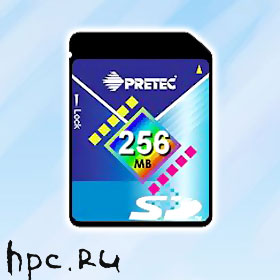 |
An older but still very popular standard Compact Flash still takes a significant place in the PDA field. CF-format drives are less expensive, but in size and weight of inferior SD / MMC. C current tenedentsiyami miniaturization that standard is gradually losing its way.
Standard CF is not only used to create the storage cards. On the basis of this new form factor, a large number itself raznnobraznoy periphery - network cards, GPS-receivers, modems, cameras, etc.
Memory cards and peripherals standard SD, CF, as well as the standard from Sony called MemoryStick (MS) will be an excellent addition to your PDA. They seriously increase the functionality and features small cars.
A million other tasks
Industry PDAs young - she just over ten years, and adequate technological power became available only recently - about 3 years ago. But despite that, for small computers designed has a lot of convenient software. Among them: a world map and specific cities, able to pair with a GPS-receiver to show your location on the ground, aides traveler, converting measures of length and size of clothing, time and currency, various games (from Tetris to Doom), viewer and photo processing , recipes, cocktails, and medical reference books, programming languages, and even a virtual remote control.Indeed, almost every CPC has an infrared port, which means that it can replace all your remote control home appliances in your apartment. If only the distance from the PDA to equipment were not too great.
From heaven to earth
Not to create too rosy impression of, say, that the young industry still has some "growing pains". Many of the programs has not been brought to such a level of functionality as desktop counterparts. For example, a "pocket" the text editor, badly treated table. Browsers usually display a Web page on a PDA is not ideal. In the OS as well as on large PC found errors that are corrected with special patches. E-mail programs do not always cope with letters that are embedded in huge files "difficult" formats. Sometimes these messages can not be opened on the PDA. Music players are working well, but more than 6-7 hours do not play, and such obvious and convenient features like the lock switch accidentally pressing keys (hold) implemented in only a few models of handheld machines. Battery life, incidentally, for most PDAs estimated 5.8 hours (continuous operation), this is enough for about 2-4 "normal" days without recharging the battery. The problem of localization, that is, the CPC works with the Russian information (or other "not native to this model, the language of the CCP) also imposes significant limitations. Unfortunately, virtually none of the foreign manufacturers of PDAs and programs for them to not think about the fact that their product can be used in Russia, Bulgaria and other countries differ from the Latin alphabet. Because of this, there are problems, despite the enormous effort and expense of Russian companies and developers to adapt products PDA industry for the Russian consumer.
Palm OS, Pocket PC and Symbian - the Montagues and Capulets of our time
To date, all PDAs are divided into two great camps, and the criterion of separation is your platform (operating system + its requirements for iron). The major players - PalmOS and PocketPC. In the market of smartphones and communicators (hybrid phone and PDA), the strongest competition it is running Symbian.
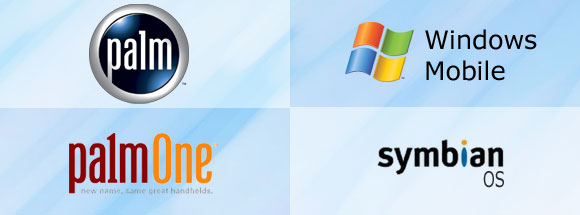 |
Computers have become the first family of Palm, who won great popularity, so this clan most rich and long history, and they created a lot of variety programs. Significant role in the formation of such a number of software provided by the fact that developers were initially available, both commercial and free tools. At the time of the appearance of Palm (1992) on the market were present in small amounts keyboard Psion organizers and revolutionary Newton from Apple, which is clearly ahead of its time, was not understood and not accepted by the public, but determined approach to the CPC for many years to come , although he himself was the size of "nekarmannyh. But it is Palm's first truly compact computers, different to the same high speed and low cost. PalmPilot together from previous mistakes, its programmed for success. Palm will never shine its multimedia capabilities and exotic features. His case as a device that should clearly carry out its limited objectives. Happened. With its black-and-white screens, excellent synchronization with PC and crazy long battery life (about 40 hours!) For many years was considered an ideal machine Palm electronic organizer.
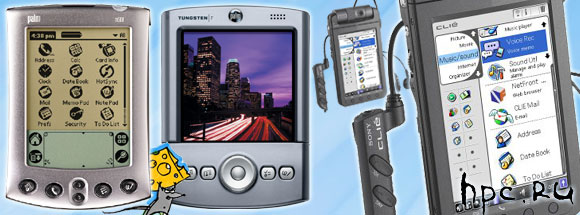 |
Somewhat later, the PDA market, Microsoft has emerged from its pocket version of the operating system of Windows - Windows CE (Compact Edition), better known today under the brand name Pocket PC, dramatically raising the bar to the equipment requirements. The first few versions of the keyboard and besklaviaturny Windows CE could not be called successful. Microsoft was in the quest and tried otpozitsionirovat their PDAs for a wide range of tasks than the Palm, including for multimedia tasks. However, because of this, the traditional functions of the PDA, usability and reliability suffered greatly. OS version succeeded one another with a decent rate, and additional software every time they rewrite. In connection with this for quite a long time the situation was as follows: A family of Palm different ascetic (2 MB RAM, monochrome screen), reasonableness and reliability, long battery life and an abundance of programs, and on the PocketPC side were colorful screens higher resolution, powerful processors and multimedia opportunities as well as ideology, as close to the "desktop".
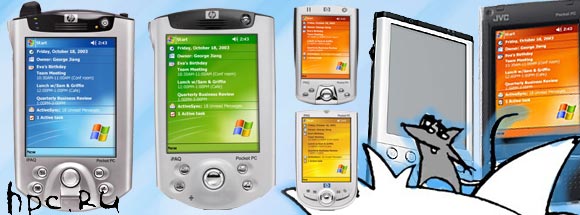 |
For over a year as the situation has changed dramatically - fresh units of both families have similar characteristics and approximately the same range of applications. Palm OS computers have added yourself multimedia capabilities, and Pocket PC - usability and reliability. Leadership on the part of the quality screens went to Palm and licensees, but that the possibility of using these screens browsers and office software just beginning to appear, so the majority of modern Palm'y less suitable for the Internet. Audio players, organizers, electronic books and dictionaries are provided on both platforms and they are all similar in quality, but the exotic programs are likely to exist only for the Palm. In general, the problem of selecting a particular CCP has not become one iota easier. In addition to these features come into play, and other more general settings - screen size, ergonomics, battery life and expandability. However, the selection criteria, we describe in detail in a later article.
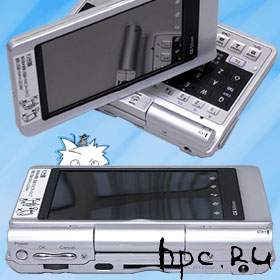 |
It should be noted that in addition to the two platforms, leaders in the market "pocket" OS work, though, and so successfully, and other manufacturers. In particular, the well-known company selling Sharp Zaurus PDAs very interesting hearth running a special pocket versions of OS Linux. Due to shell Qtopia, many horrors associated with the installation and configuration is not here - cars just as intuitive and simple as eminent competitors. True, a large and well-functioning park programs for them yet.
PDAs become ... Communicators in
Special and separate topic - devices that combine the functionality of PDAs and mobile phones, called smartphones and communicators. Dividing them is rather arbitrary, so we use these terms around interchangeably. Communicators - it is rather a PDA with phone functionality, and smartphones - most phones with PDA functionality. It is clear that the idea of such a symbiosis is extremely attractive, but many current implementations have their own significant drawbacks - some are functional enough, others are too cumbersome, others quickly put the battery. In general, this is a state of flux young and promising market.
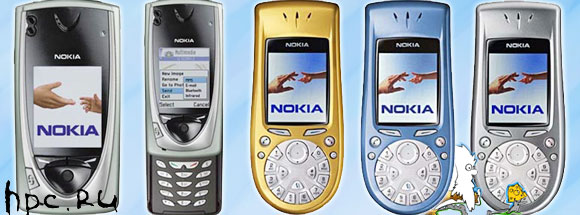 |
It is here that it is appropriate to talk about another powerful platform - operating system Symbian, which employs many smartphones. Symbian is distinguished by thoroughness and stability. Surprising, because its developers - the elders in this market. The first operating system - predecessor of the current Symbian - was published in 1981 (it was the PDA Psion Organizer, then Psion 3 and 3C, later Psion 5 and 5, MX). Alas, the radical transformations that have occurred on such a long journey, do not allow for modern "smart phones" programs written for old Psion, so the available fleet of software for modern Symbian is not too large. Encouraging the fact that it is growing rapidly, including through the efforts of the world's leading manufacturer of mobile phones, Finnish company Nokia, which released the first smartphone running the original versions platform Symbian - Series 60.
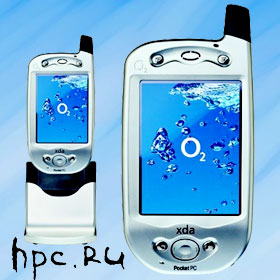 |
| Telephonized PDA or PDA O2 XDA |
In recent years begin to catch on so-called "phone is handheld or communicator, that is, in fact, the same handheld computers, but equipped with GSM / GPRS-module. Are governed phone edition operating system Pocket PC - Phone Edition.
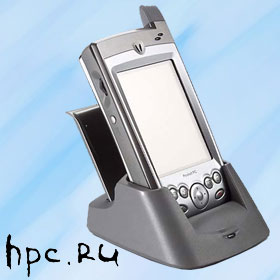 |
| Communicator based Pocket PC Phone Edition - Mitac Mio 728 |
Are also gradually starting to appear on the market and the first smartphones or literally "smart mobile phones" running the same name OC - Smartphone 2002. Both platforms are owned by Microsoft, which is trying to oust Symbian seriously in this direction. The main difference between this OS on Pocket PC Phone Edition - is sharpened under control with a standard telephone keypad. Unlike PDA screen smartphones often do not touch.
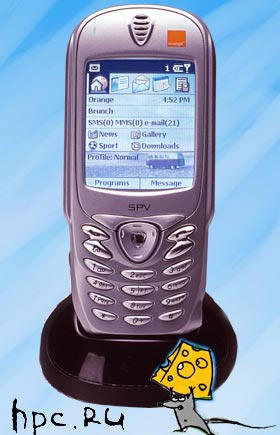 |
| Smartphones SPV from Orange's based on Smartphone 2002 |
Well, as always happens, the competition that developed between the leading manufacturers of PDAs and smart phone handsets, only the arm to end customers, ie us with you.
Finale
Handheld computer - the universal electronic assistant, which does not replace your desktop machine, but it will forever put out of the bag notebook, diary, hefty book to read, player, voice recorder, dictionary and phrase book, and many other heavy and bulky items that were previously indispensable tools of human thinking. Whether you're a student, a successful businessman, a housewife or a top manager, climber, extreme, or a freelance journalist, be sure to find the CCP, features and price of which converge in a nice point, entitled "Tomorrow I'll make myself a wonderful gift." The authors, translation:
